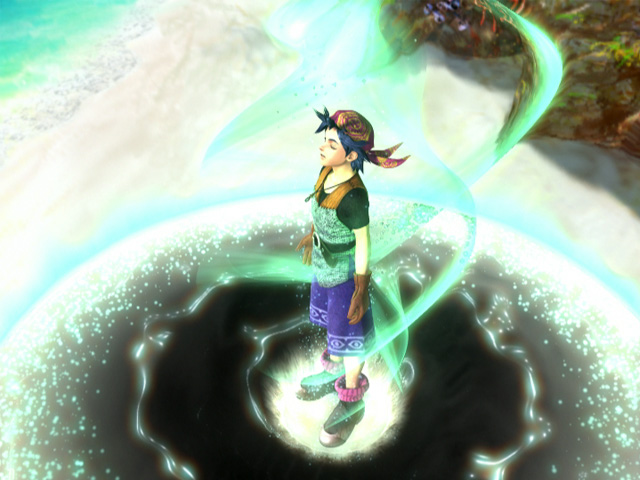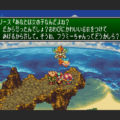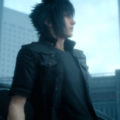Special Feature: Chrono Cross Was Very Much a Product of Its Time

The most stand-out aspect of Chrono Cross was just how little it resembled its predecessor Chrono Trigger, something worth thinking about on the 20th anniversary of its Japanese release today.
Chrono Trigger was known for being a colorful game with a whimsical world and characters, which represented a fusion of visions from the then-head of the Final Fantasy series, Hironobu Sakaguchi, and the head of the Dragon Quest series, Yuji Horii. The game featured character and enemy designs from Akira Toriyama of the latter series, though the characterization and themes felt closer to those from the Final Fantasy series at the time. The game assembled the best Japanese RPG development talent available, most of whom happened to be available at or for Squaresoft. To no surprise, it’s been highly regarded as one of the best games in the genre since its release on Super Nintendo in 1995.
It was always unlikely that Squaresoft would be able to assemble another team anywhere near this caliber for a future game. Making titles for 32-bit and 64-bit platforms was more expensive and time consuming compared to SNES software production, and many developers were focused on their own projects. There were attempts to get a more direct sequel off the ground at one point, but plans ended up being scrapped for reasons never fully clarified, and its assets were used in Xenogears. Chrono Cross came into existence from a team that nonetheless wanted to make a new game in the series It was a less direct sequel that went in a wildly different direction, but this shouldn’t have been as surprising as it was at the time.

Few staffers involved with Trigger were part of Cross’ development team, which retained team members like Masato Kato as director, planner, and scenario writer (he was previously lead writer and co-planner for Trigger), Yasuyuki Honne as art director (previously map designer for Trigger), and Yasunori Mitsuda for the music composition. Planners influential to the tone and scenario for the first game like Sakaguchi, Horii, Takashi Tokita, and Yoshinori Kitase (the last two of which directed a number of Final Fantasy games) were not involved, which alone implied that it would be a very different experience. It also looked different thanks to Toriyama’s absence, with Nobuteru Yuuki handling the character designs instead.
The tone likely would have been different even if it retained more talent from its predecessor. Chrono Cross was developed within a Squaresoft that shifted priorities only a few years after Chrono Trigger released. Square’s games had always been moderate successes in the worldwide market, with their best sales coming from Japan. But Final Fantasy VII changed that in 1997, when it became one of the best-selling games in history and introduced the JRPG genre to a larger audience around the globe. The game became the guiding vision for the company’s future, and it was Square’s intention to capitalize on that success with titles including similarly darker tones and characters shrouded in mystery. In addition to Final Fantasy VIII, Xenogears and Parasite Eve were among them, while another was Chrono Cross.
Instead of starring a titular character like Chrono (spelled Crono due to space limitations), Cross featured the non-titular Serge as its protagonist. The time-travelling theme was also dropped, to have players travel between two alternate universes: The Home World and Another World. The story displays just how dark its events will get early on, by confirming how the Another World Serge was killed as a child, and only further unravels from there. The body count is noticeably higher than its predecessor’s, and it maintains the oppressive atmosphere despite its beautiful physical locations. Not that it’s devoid of wackiness, but the themes it largely tackles are moodier.

Cross also received a new battle system. Its normal battles relied on stamina points, with characters being capable of light, medium, and heavy attacks depending on their attack power. It was reminiscent of Xenogears’ at the time, though without the flashy individual combos. Its reliance on a character elemental system added another layer of complexity not present in Trigger. Cross is also well known for having a whopping 45 playable characters, one of the highest counts ever in a JRPG (though that’s still nothing compared to the Suikoden games) easily dwarfing the previous game’s seven. This added a lot of variety, though not all of them are useful.
Again, the change in lead development staffers automatically led to a change in tone, though market conditions in the late 90s meant Squaresoft would have wanted a game with a darker mood regardless. It was bound to be divisive from the start, but the other changes exacerbated debates about whether it’s a worthy successor to Trigger. On its own, however, it was one of the best JRPGs the PSOne had to offer, thanks to how it captured a great feeling of adventure and its challenge.

It’s tough not to agree about its superlative presentation. Chrono Cross is one of the best-looking PSOne games, which is largely attributed to the picturesque background work from Yasuyuki Honne. The soundtrack is also one of Yasunori Mitsuda’s best — if not his magnum opus.
Chrono Cross stands as one of the best Japanese RPGs of its time, despite how it’s a debatable follow-up to Chrono Trigger. It’s also a good period piece, a representation of Squaresoft’s state in 1999. It was among the last batch of JRPGs they released before their self-destructive idea to fund a Final Fantasy CG film, which bled the company’s financials to a point where they had no option but to merge with their top rival at the time: Enix.
Fortunately, Square Enix hasn’t completely forgotten about it. A concert was held by Mitsuda to commemorate its anniversary in Japan, and updated rerelease of the soundtrack and an orchestral soundtrack were released this year. Perhaps they’ll get around to remastering the game one day soon, if only to see those backgrounds in more pristine forms.





